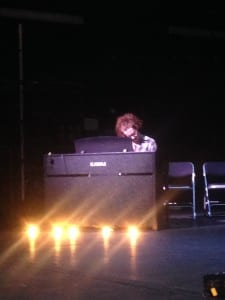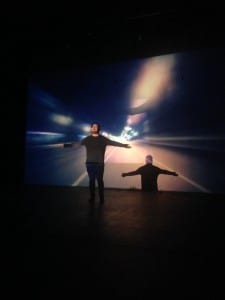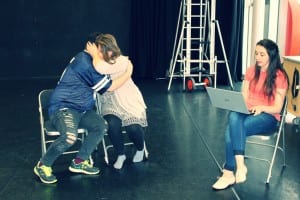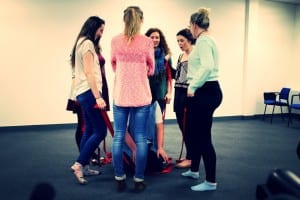So, it’s happened! The performance is over and I have to say, we got some wonderful feedback! As a performer there were things that I would have changed if I could do it again: firstly I was out of time at the end of the time lapse sequence, this doesn’t sound like a big deal but we rehearsed it for so many hours I really wish I had got that timing right at the end! Another thing is that I moved around a few sections of my speech, I think I acted professionally and didn’t give away the fact that I went wrong (until now) but I was still annoyed with my performance. Over all I was incredibly proud of our performance. Two days ago Naomi and I were talking in a rehearsal about how scared we were to be dancing and performing in this piece because of its physical nature, this was a genuine fear from two performers who have never been totally comfortable with this style performance. I’m proud of us for doing it, and apparently doing it well! I’m proud of the entire cast who have worked so hard together to develop this piece; and proud of our wonderful production team who helped bring everything together. Alice D. has written a post which has a couple of reviews of the show, click on reviews and it should pop up in a new window!
Of course it wasn’t just the 50 minutes on stage that counted, we also had the get in and get out, run by our fearless stage manager. We had all day for a get in so we set up and managed to have two full tech runs and a two hour break before we were called back in at 6pm. During our second run we had Phil Crow taking photographs for the schools Flickr page which are all online!
Reflecting back over the past months working with Fill In The Blank Theatre, I’ve learned a lot about being part of a professional company, both positive and negative things. I know now that change is good, and should be expected. Originally we had said that we would be a collaborative company but as time went on and time was more of a pressure, it became much more direction and actors taking direction. We were still able to give input and ideas but it was less about workshopping and letting ideas grow in the space. This is okay because it ended up being what the company needed, but as a first time company and people working in this context for the first time, this difference was often frustrating. It also became clear that working with people on a project like this and for this length of time brings you closer and I think it was very clear in our piece that we worked really well together through the strength of our ensemble work. Overall this has been an enlightening experience and has altered what I can expect from a career in a theatre company, it has also taught me that although I love being a performer, I also have a strong interest in the administration of it all.
Last of all, a huge thank you for all of the technical support at the Lincoln Performing Arts Centre. We couldn’t have made the show we did without your guidance and support.
Works Cited
Crow, P. (2015) Lincoln School of Fine and Performing Arts: The Man Whose Memories Fell Out. [online] Available at https://www.flickr.com/photos/61839232@N02/17713112130/ [Accessed 21 May 2015].




